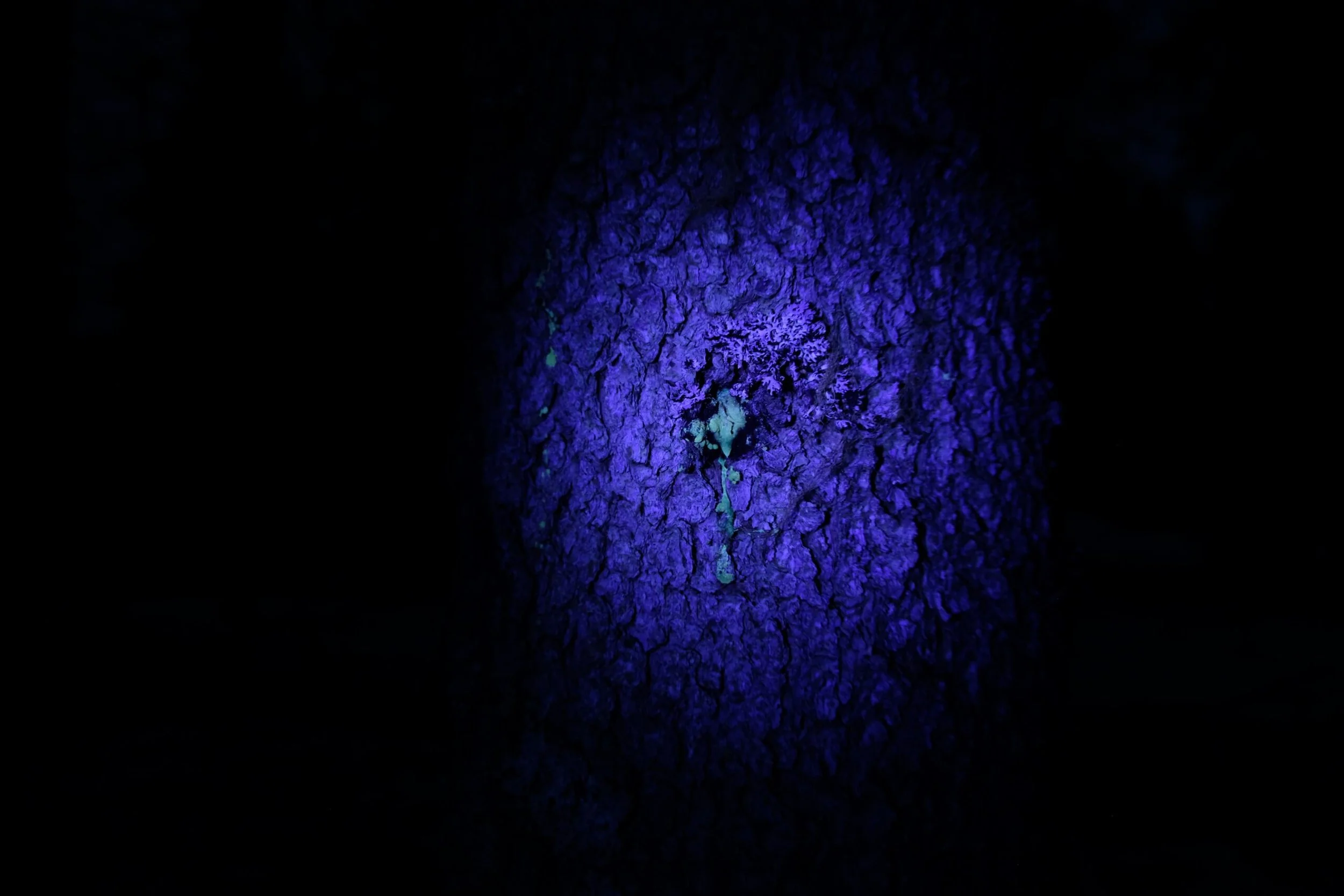If a tree falls in a forest
Curatorial Essay by Sherry Liu and Yantong Li
If a Tree Falls in a Forest brings together a collection of lens-based multimedia works that highlight two distinct yet often interwoven imaginaries of nature. Huang’s series Artificial Natures is situated within a broader conceptual framework that underpins her practices, in which the urban fabric is seen as a scripted space with an enclosed system of metabolism that incubates artificial mediations of nature that perpetuate obsessions of permanence and accumulation. Abandoned Spaces as Temporary Studios, on the other hand, relocates our attention outwards to the peripheries of the metropolis, in which momentary fractures are manifested within abandoned spaces and forgotten ruins where nature begins to reclaim its presence. In contrast, in the series Solid Void, Liquid Earth, Simmons engenders a move towards the more-than-human agents as carriers of knowledge by shifting our attention to the overturned trees and tree saps in the deep forests. Following a well-known folklore during her residency in Finland, Simmons imagines the void left by the overturned trees as portals that bridge air and the underworld, light and deep oily pools, past and present. At once a legend but also an allegory, Simmons' work creates a portal of alternative relationalities between humans and nature.
The exhibition title is framed in relation to a famous thought experiment: "If a tree falls in a forest and no one is around to hear it, does it make a sound?" This question has historically been explored through the lenses of quantum physics as well as metaphysics. While scientific inquiries focus on sound waves and quantum superposition, the philosophical inquiry of the question attends to the relationship between observation, perception, existence, sensation, and reality. It shows the possibility of unperceived existence, questions our knowledge of unobserved worlds, and challenges the very concept of “existence” related to the limitation of human perception. Both Huang and Simmons deal with human perception of nature in their work, in which both artists actively take on the roles of observers in nature and urban landscapes with an intention to explore what might have been unobserved or under-observed. Their photographs act like mirrors: observations of our own existence happen while we observe our environments through them.
By bringing together the artists’ works under the premise of the philosophical inquiry, we bring broader environmental discourses into closer proximity. The metonymy of the phrase extends to our sensations and to how our perception of the natural environment constitutes our relationalities to it. Whether it is artificial plantations thriving within the urban fabrics or lichens metabolized through the deep forests, we find these sights operating at a threshold of human desires to at once exist beside and beyond nature, where the symbiotic and anthropocentric pulses collide into each other the moment the trees are overturned and re-erected. We ponder:
When a void is left beneath the trunk, where does it lead to? Where does the tree go? While the urban forest grows increasingly vibrant, how many trees have fallen beyond its trajectory, and no one is around to “hear” it?
These questions pose opportunities and discourses for us to grow more attentive to the aphasia concealed behind the mirage of the artificial landscapes within our urban fabrics by shifting our attention to and beyond its peripheries. When situated within this discourse, Huang and Simmons’ works highlight the urgent challenges posed by the privation of head-on observations of the “fallen trees,” or environmental crisis in our present day. From exploring artificial landscapes in the city to folklore about overturned trees as portals, from venturing into a dark forest to setting foot on unused buildings forgotten by humans, the artists call for an awareness of the unseen, unobserved, unperceived and ignored at a threshold where human desires and imaginaries collide.
Images courtesy of the artists


